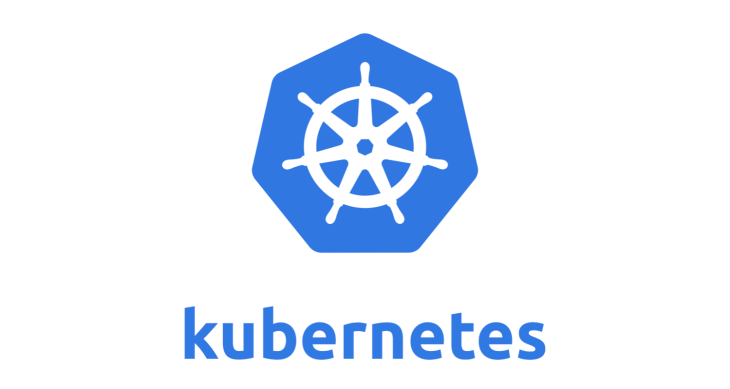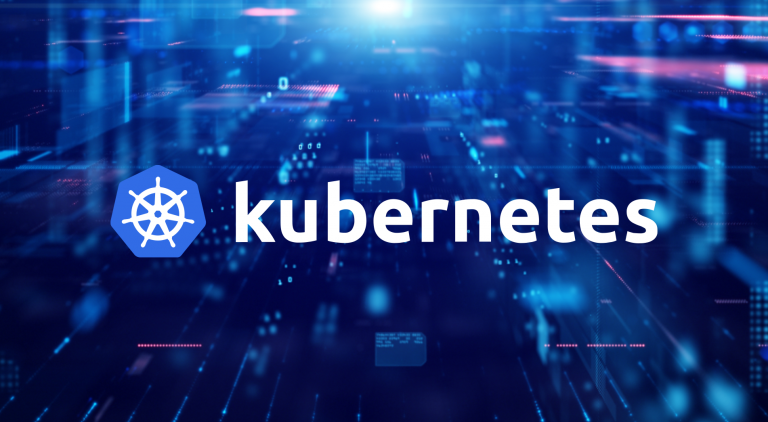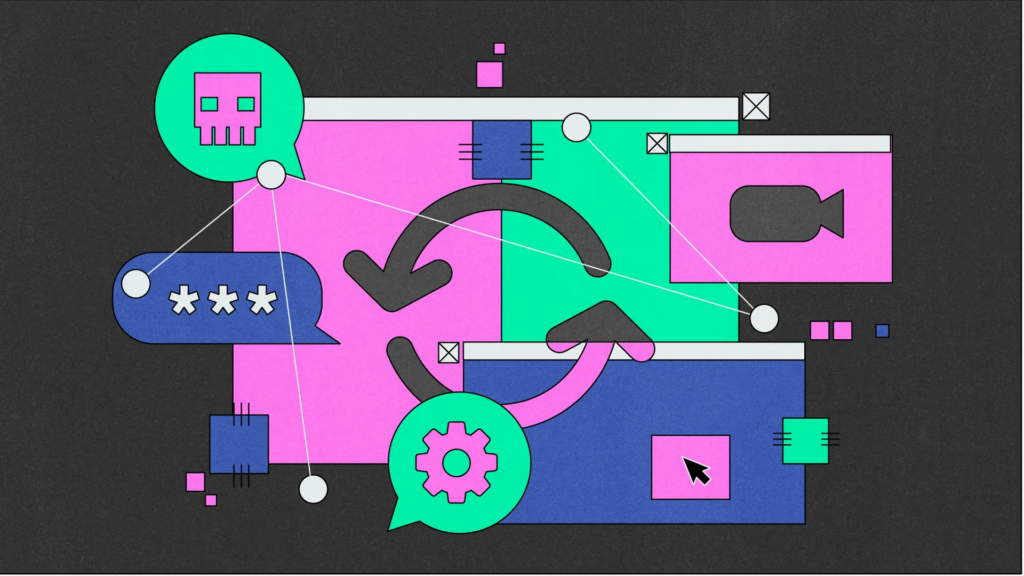Kubernetes is an open-source platform that automates the deployment, scaling, and management of containerized applications. It was originally developed by Google and is now maintained by the Cloud Native Computing Foundation (CNCF). Kubernetes provides a way to manage and orchestrate containers, which are lightweight, portable, and self-contained environments for running applications. With Kubernetes, you can easily deploy and manage your applications across a cluster of servers or nodes, and scale them up or down as needed. It also provides a rich set of features for monitoring, logging, and troubleshooting your applications, as well as rolling updates and rollbacks, automatic scaling, and self-healing capabilities. this technology provides a powerful and flexible platform for building and managing modern, cloud-native applications.

A brief history of Kubernetes
Kubernetes was originally developed by Google in 2014 as an internal project to manage their containerized workloads. Google had been using containers for several years before that, and they had developed an internal system called Borg to manage their containerized applications. Kubernetes was built on the lessons learned from Borg, and was designed to be an open-source platform that could be used by anyone to manage their containerized workloads.
Google released Kubernetes as an open-source project in 2015, and it quickly gained popularity among developers and organizations looking for a way to manage their containerized applications. In 2016, Kubernetes was donated to the Cloud Native Computing Foundation (CNCF), which is a vendor-neutral organization that promotes the adoption of cloud-native technologies.
Since then, Kubernetes has become the de facto standard for container orchestration, with a large and active community of contributors and users. It has been adopted by many of the world’s largest organizations, including Airbnb, eBay, IBM, Lyft, and Spotify, among others. Kubernetes has also become a key technology in the cloud-native ecosystem, enabling organizations to build and deploy applications that can run on any cloud infrastructure
What is a Kubernetes cluster?
A Kubernetes cluster is a group of nodes (servers or virtual machines) that run containerized applications and are managed by Kubernetes. The cluster consists of a control plane and one or more worker nodes.
The control plane is responsible for managing the overall state of the cluster, and includes several components such as the Kubernetes API server, etcd database, scheduler, and controller manager. The control plane runs on one or more dedicated nodes, which are also referred to as master nodes.
The worker nodes are responsible for running the containerized applications and are where the actual workload runs. Each worker node typically runs a container runtime such as Docker or CRI-O, and is managed by the control plane.
In a Kubernetes cluster, the control plane communicates with the worker nodes through the Kubernetes API server, which provides a unified interface for managing the cluster. The Kubernetes scheduler is responsible for scheduling workloads to run on the worker nodes, while the controller manager ensures that the desired state of the cluster is maintained.
Kubernetes cluster provides a powerful and flexible platform for deploying and managing containerized applications, allowing developers to easily scale and manage their applications across a distributed infrastructure.
What is a Kubernetes node?
A Kubernetes node, also known as a worker node, is a physical or virtual machine that is part of a Kubernetes cluster and is responsible for running containerized applications. Each node has a set of resources (CPU, memory, and storage) that can be allocated to run one or more containers.
The node runs a container runtime, such as Docker, to start and manage containers. It also runs a kubelet, which is a Kubernetes agent responsible for communicating with the control plane and ensuring that the containers on the node are running as intended. Additionally, each node runs a kube-proxy, which is a network proxy that forwards traffic to and from the containers.
When a developer deploys an application to a Kubernetes cluster, they specify how much CPU, memory, and storage their application needs. Kubernetes uses this information, along with the available resources on each node, to schedule the application containers to run on specific nodes.
Nodes can be added or removed from a cluster as needed, allowing the cluster to easily scale up or down based on the demand for resources. The Kubernetes control plane constantly monitors the health of the nodes, and can automatically replace failed nodes with new ones to ensure that the applications running on the cluster are always available
What is “managed Kubernetes?
Managed Kubernetes, also known as Kubernetes-as-a-Service (KaaS), is a cloud service offering that provides a managed version of the Kubernetes platform. With managed Kubernetes, a cloud provider or third-party vendor takes care of the operational aspects of running a Kubernetes cluster, such as provisioning, scaling, upgrading, and patching.
Managed Kubernetes provides several benefits for organizations, including:
- Simplified operations: Managed Kubernetes eliminates the need for organizations to manage the underlying infrastructure and Kubernetes components, allowing them to focus on developing and deploying their applications.
- Scalability: Managed Kubernetes makes it easy to scale a cluster up or down as needed, based on the demand for resources.
- High availability: Managed Kubernetes providers typically offer built-in redundancy and failover capabilities to ensure that applications are always available.
- Security: Managed Kubernetes providers often offer security features such as network isolation, encryption, and access controls to protect the cluster and the applications running on it.
Some examples of managed Kubernetes offerings include Amazon Elastic Kubernetes Service (EKS), Microsoft Azure Kubernetes Service (AKS), and Google Kubernetes Engine (GKE).
What is kubectl?
kubectl is a command-line tool used to interact with Kubernetes clusters. It is the primary command-line interface (CLI) for managing Kubernetes resources, and can be used to deploy, inspect, and manage applications running on a Kubernetes cluster.
With kubectl, you can perform a variety of tasks, such as creating, updating, and deleting Kubernetes resources, including pods, services, deployments, and config maps. You can also use kubectl to view logs and events, troubleshoot issues, and update the configuration of the cluster.
Kubectl communicates with the Kubernetes API server to perform these tasks, and requires credentials (such as a username and password or a token) to authenticate with the cluster. Kubectl can be used from a local command line, or from within a container running on a Kubernetes cluster.
Kubectl has a large number of subcommands and options, and can be customized with plugins to extend its functionality. It is an essential tool for anyone working with Kubernetes, and is used by developers, DevOps engineers, and administrators alike
What are the benefits of Kubernetes?
Kubernetes provides several benefits for organizations that are looking to deploy and manage containerized applications in a scalable and efficient way. Some of the key benefits of Kubernetes include:
- Scalability: Kubernetes allows organizations to easily scale their applications up or down based on the demand for resources. It can automatically adjust the number of running containers based on factors such as CPU utilization, memory usage, and incoming traffic.
- High availability: Kubernetes provides built-in features for ensuring high availability, such as automatic failover and redundancy. It can automatically replace failed containers or nodes with new ones to ensure that applications remain available.
- Portability: Kubernetes provides a consistent environment for running applications across different infrastructure providers and environments, such as on-premises data centers and public cloud providers.
- Automation: Kubernetes automates many of the operational tasks associated with deploying and managing containerized applications, such as rolling updates, health checks, and configuration management.
- Resource utilization: Kubernetes can optimize resource utilization by scheduling containers onto nodes based on available resources and workload requirements.
- DevOps efficiency: Kubernetes helps to streamline the application development and deployment process, making it easier for developers to build and deploy applications while allowing operations teams to focus on higher-level tasks.
Kubernetes provides a powerful and flexible platform for deploying and managing containerized applications, allowing organizations to take advantage of the benefits of containerization while simplifying the management of their infrastructure
What are the limitations of Kubernetes?
While Kubernetes provides many benefits for organizations looking to deploy and manage containerized applications, there are also some limitations to be aware of. These include:
- Complexity: Kubernetes can be complex and difficult to set up and manage, particularly for organizations that are new to containerization or have limited resources.
- Learning curve: There is a learning curve associated with Kubernetes, and it may take some time for developers and operations teams to become proficient in using the platform effectively.
- Cost: While Kubernetes is free and open-source, there may be costs associated with running and managing a Kubernetes cluster, such as cloud infrastructure costs, licensing fees for managed Kubernetes services, and staffing costs.
- Performance overhead: Kubernetes introduces some performance overhead due to the additional layers of abstraction and orchestration involved in managing containerized applications.
- Resource requirements: Kubernetes requires a certain amount of resources to operate effectively, such as CPU, memory, and storage. This can be a challenge for organizations with limited resources.
- Debugging and troubleshooting: Debugging and troubleshooting issues with Kubernetes can be challenging, particularly when dealing with complex distributed systems.
While Kubernetes provides a powerful and flexible platform for deploying and managing containerized applications, it is important to be aware of these limitations and consider them when evaluating whether Kubernetes is the right choice for your organization.
What is Kubernetes used for?
Kubernetes is used for deploying, managing, and scaling containerized applications. It provides a platform for running applications in containers, which are lightweight, portable, and easy to manage. Kubernetes is used by organizations of all sizes and across many industries, including finance, healthcare, e-commerce, and media.
Some common use cases for Kubernetes include:
- Application deployment: Kubernetes is used to deploy containerized applications to production environments, providing features such as automated rollouts, rollbacks, and scaling.
- Microservices: Kubernetes is used to manage complex microservices architectures, providing features such as service discovery, load balancing, and routing.
- DevOps: Kubernetes is used as part of DevOps workflows to automate the deployment and management of applications in a continuous integration and continuous delivery (CI/CD) pipeline.
- Cloud-native development: Kubernetes is used as part of cloud-native development practices, allowing organizations to build applications that are designed to run natively on cloud infrastructure.
- Hybrid cloud: Kubernetes is used to deploy and manage applications across hybrid cloud environments, providing a consistent platform for running applications across on-premises data centers and public cloud providers.
Kubernetes is a powerful and flexible platform that can be used in many different ways to deploy and manage containerized applications. Its features for scaling, automation, and resource utilization make it a popular choice for organizations that are looking to modernize their application infrastructure and take advantage of the benefits of containerization.
What’s the difference between Kubernetes & Docker?
Kubernetes and Docker are two related but distinct technologies that are often used together to deploy and manage containerized applications.
Docker is a containerization platform that allows developers to package applications and their dependencies into lightweight, portable containers. Docker provides tools for building, testing, and deploying containers, making it easier to move applications between development, testing, and production environments.
Kubernetes, on the other hand, is a container orchestration platform that provides a way to automate the deployment, scaling, and management of containerized applications. Kubernetes can be used to manage Docker containers, as well as other containerization platforms such as rkt or CRI-O.
In other words, Docker provides the ability to package and run applications in containers, while Kubernetes provides a way to manage and orchestrate those containers at scale.
Some of the key differences between Kubernetes and Docker include:
- Focus: Docker focuses on containerization, while Kubernetes focuses on container orchestration.
- Architecture: Docker provides a platform for building and running containers, while Kubernetes provides a platform for managing and orchestrating containers across multiple hosts.
- Scale: Docker is designed to manage containers on a single host, while Kubernetes can manage containers across multiple hosts in a cluster.
- Features: Docker provides features such as container building, image distribution, and container networking, while Kubernetes provides features such as service discovery, load balancing, and scaling.
While Docker and Kubernetes are related technologies, they serve different purposes and can be used together to provide a powerful platform for deploying and managing containerized applications
What do I need to know to start learning Kubernetes?
To start learning Kubernetes, there are several things you should be familiar with:
- Containerization: Kubernetes is built on the concept of containerization, so it’s important to have a good understanding of what containers are, how they work, and how they differ from traditional virtualization.
- Linux: Kubernetes is typically run on Linux operating systems, so it’s important to have a good understanding of Linux administration, including command line tools and system administration.
- Cloud computing: Kubernetes is often used in cloud environments, so it’s helpful to have a good understanding of cloud computing concepts, including cloud infrastructure, virtualization, and networking.
- Networking: Kubernetes relies on networking to manage communication between containers and nodes, so it’s important to have a good understanding of networking concepts, including IP addresses, ports, and protocols.
- Programming: While you don’t need to be an expert programmer to use Kubernetes, it’s helpful to have a basic understanding of programming concepts, including variables, functions, and control flow.
Once you have a good foundation in these areas, you can start learning Kubernetes by working through tutorials and exercises, experimenting with simple deployments, and gradually building up your skills and knowledge. There are many resources available for learning Kubernetes, including official documentation, online courses, and community forums.
What Kubernetes certifications are available?
There are currently three Kubernetes certifications available through the Cloud Native Computing Foundation (CNCF):
- Certified Kubernetes Administrator (CKA): This certification is designed for individuals who have a strong understanding of Kubernetes architecture, installation and configuration, networking, security, and troubleshooting. The CKA exam is a hands-on, performance-based exam that tests the candidate’s ability to perform common Kubernetes administrative tasks.
- Certified Kubernetes Application Developer (CKAD): This certification is designed for individuals who have experience building and deploying cloud-native applications on Kubernetes. The CKAD exam is also hands-on and tests the candidate’s ability to develop, deploy, and debug Kubernetes applications.
- Certified Kubernetes Security Specialist (CKS): This certification is designed for individuals who have a strong understanding of Kubernetes security principles and best practices. The CKS exam is also hands-on and tests the candidate’s ability to secure Kubernetes deployments, including authentication, authorization, and network security.
Each certification requires passing an exam that is administered online and proctored remotely. The exams are designed to test practical skills and knowledge, rather than simply memorizing information. Candidates must renew their certification every two years by retaking the exam or earning a specific number of continuing education credits.
Where can I learn Kubernetes?
There are many resources available for learning Kubernetes, ranging from free online courses to paid training programs. Here are some places where you can start learning:
- Official Kubernetes Documentation: The Kubernetes website provides extensive documentation and tutorials, covering everything from getting started to advanced topics. This is a great place to start for beginners and for those who want to deepen their understanding of Kubernetes.
- Kubernetes.io Interactive Tutorials: Kubernetes.io provides a set of interactive tutorials that allow you to experiment with Kubernetes concepts in a sandboxed environment.
- Online Courses: There are many online courses available that cover Kubernetes, including free courses on websites like edX and Coursera, as well as paid courses on platforms like Udemy and Pluralsight.
- Kubernetes Meetups: Kubernetes Meetups are local groups that meet regularly to discuss and learn about Kubernetes. Attending these meetups can be a great way to network with other Kubernetes professionals and learn from experts in the field.
- Kubernetes Certification Programs: As mentioned earlier, the Cloud Native Computing Foundation (CNCF) offers certification programs for Kubernetes administrators, developers, and security specialists. Preparing for these exams can be a great way to deepen your knowledge of Kubernetes and demonstrate your expertise to potential employers.
- Kubernetes Community Forums: The Kubernetes community maintains several forums where members can ask and answer questions related to Kubernetes. These forums can be a great way to get help with specific problems and learn from others in the community.
There are many resources available for learning Kubernetes, and the best approach will depend on your learning style and goals. Experimenting with Kubernetes in a sandboxed environment is a great way to get started, and then you can build up your skills and knowledge through online courses, meetups, certification programs, and other resources.
Also Read : Benefits of IOT in manufacturing





